Savannah Monitor Care Sheet
In this Savannah Monitor Care Sheet you will learn a lot. The Savannah monitor (Varanus exanthematicus) is native to the Savannah of eastern and southern Africa. In the wild these monitors are scavengers covering large distances as they search for small prey items. Savannah monitors in the pet trade are either wild-caught or captive-raised.
Savannah monitors belong to the family Varanidae family, which includes some of the largest lizard species in the world such as the Komodo dragon and Nile monitor. Although the Savannah monitor is small compared to many members of this family, pet Savannah monitors can range from 3 to 6 feet in length, with their tail comprising almost half of total body length. With proper care, Savannah monitors can live up to 10 or 15 years. Savannah monitors are not recommended for novice reptile enthusiasts since recreation of required habitat and diet can be challenging. They are a more intermediate or expert level pet.
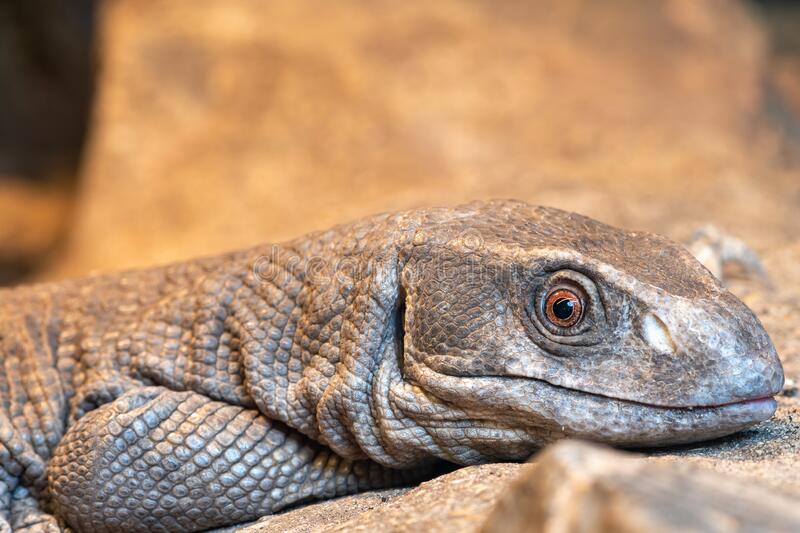
Savannah Monitor Care Sheet Diet:
These Monitors require a high protein diet. Offer gut-loaded insects such as large crickets, superworms, king mealworms, silkworms, grasshoppers, cockroaches, as well as crayfish and other low-fat foods like cooked egg whites or Egg beaters®. Waxworms should only be offered occasionally, as they are high in fat. Pre-killed mice or rats can be offered, but only occasionally to reduce the risk of obesity.
Dust the non-breeding adult’s diet with a calcium carbonate or calcium gluconate supplement once weekly. Calcium supplements should be devoid or low in phosphorus with a minimum calcium: phosphorus ratio of 2:1. Avoid products containing Vitamin D as this can lead to toxicity. A general vitamin/mineral supplement may also be offered once weekly.
Adults may be fed 2-3 times weekly. To prevent injury always use tongs to introduce food and remove leftovers. Your monitor may mistake your moving fingers for moving prey when hungry.
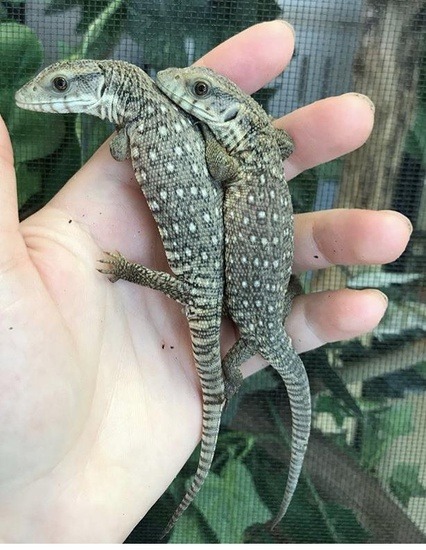
Savannah Monitor Care Sheet Water:
Your monitor needs fresh water provided daily. Provide water in a heavy dish or tub large enough for your lizard to not only drink from, but also completely submerge itself (they can stay under water for extended periods of time). Provide access to a larger soaking tub at least 1-2 times weekly for several hours.
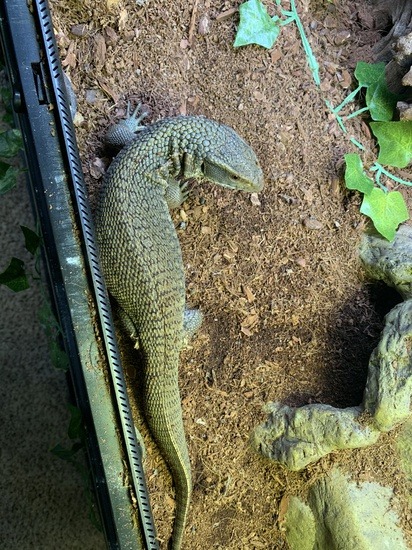
Savannah Monitor Care Sheet Housing:
Temperature Proper heating is a critical component in the care of your Savannah monitor, allowing efficient metabolism, appropriate growth, and proper immune system function. These lizards thermoregulate themselves based on body needs and require a temperature gradient on both a horizontal and vertical plane.
Combine an undertank-heating pad (on the warm side) with a spotlight or white incandescent bulb in the basking area to achieve the correct temperature gradient. Avoid electric reptile “hot rocks” as these can be associated with serious burns. Strive for 85-90°F (29-32°C) with a basking area that reaches 94-100°F (34-38°C). Place thermometers on the cool side of the cage, the warm side and near the basking area to monitor temperature.
Temperature should drop to 74-78°F (23-26°C) at night. Use a nocturnal reptile bulb or red light if nighttime temperatures drop too low so as not to disturb your monitor’s sleeping patterns. Humidity Strive for 40-50% relative humidity, which may be achieved by lightly misting the cage. Also
offer a moist hide area.

Savannah Monitor Care Sheet Cage size and design:
Savannah monitors are active lizards. Adults require very large enclosures (i.e. 6 x 3 x 6 feet or 1.8 x 0.9 x 1.8 m) so custom built cages are often needed. Provide a minimum of 100 square ft. (30 sq. m) floor space.
Enclosure tops must be secure enough to prevent escape while supporting heat and light elements. Screen tops are recommend to allow ventilation and penetration of ultraviolet rays. Screen tops should be made of a plastic coated welded wire that is resistant to claws and firmly attached.
Substrate Preferred bedding include newspaper, butcher block paper, and outdoor carpeting or
“Astroturf”. Reptile bark or non-aromatic mulch may also be used. Artificial turf and bark both trap moisture that can promote bacterial or fungal overgrowth, so these bedding must be changed frequently.
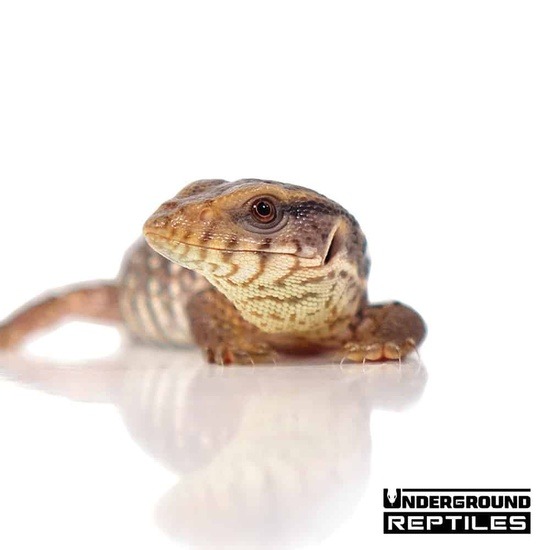
Savannah Monitor Care Sheet Cage furniture:
Provide full-spectrum lighting for optimal absorption of dietary calcium. Be sure to choose a bulb specifically designed for reptile use that emits light in the UVB range of 290-320 nm. Ultraviolet rays are filtered by glass and plastic therefore natural light and artificial light must not pass through glass or plastic. The UVB spectrum generally degrades after about 6 months; therefore bulbs should be replaced every 6 months.
In warm weather exceeding 75°F (24°C) your monitor can be taken outside and exposed to natural sunlight, however be aware some monitors become aggressive when exposed to natural sunlight (see Handling and Behavior below).
Place hide boxes at both ends of the cage. Cardboard boxes with a cutout hole, pieces of large rounded cork, covered cat litter pans or commercially available reptile hide boxes all work well. Large pieces of dried grape wood, fig wood, or cork bark can also be used.
Rocks should be large and smooth edged to help keep nails in wear as well as allow for easy cleaning. Limestone slabs and river rocks work nicely. Make sure there is still plenty of height above climbing structures to contain your monitor.
Sanitation Clean water and food bowls daily.

Bringing your Savannah Monitor home!
When you bring your new Savannah Monitor home for the first time it will be very stressed out due to the movement and uncertainty. Imagine being yanked out of your home and being place in a strange location. Imagine how frightening that is! Now, imagine how the bearded dragon feels.
That’s why it is important to have everything functional before bringing your new family member home. This helps him feel more secure and reduces overall stress, and decreases the time it takes for him to settle in. You do not want to introduce the Savannah Monitor to its new home, them have to keep moving and shuffling things to adjust.
Set up the environment and do the adjusting before bringing him home.
You also want to have food and fresh, dechlorinated water available when the Savannah Monitor comes home. Already have the crickets, roaches, horn worms, and whatever else you will provide for food all ready to go.
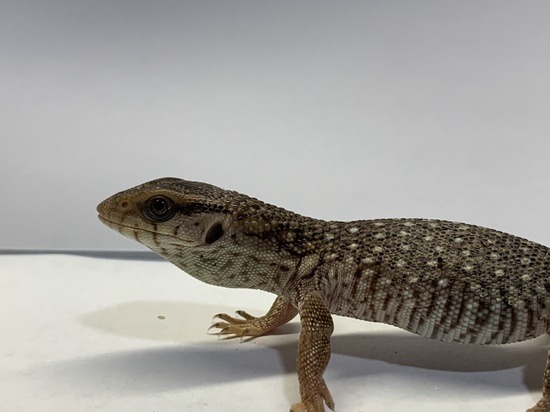
Savannah Monitor Care Sheet Conclusion:
You are now ready to be the proud papa or mama of a Savannah Monitor!
Of course, this Savannah Monitor Care Sheet is not the end-all, be-all of their husbandry. But hopefully you can come away with a little better understanding of introducing these amazing animals into your life.
We hope you found this care sheet informative and helpful, and we hope you come back to A 2 Z Reptiles any time you have any comments or questions. Like and share this article for more people to learn how to care for Savannah Monitors!
Savannah Monitor Care Sheet:
Thank you!
Savannah Monitor Care Sheet:
Check out a lot of the Savannah Monitor featured here on MorphMarket!
Want to Support our efforts? Donate! fan funding is our main source of income! Thank you!
Become a Patron!
 Buy me a coffee
Buy me a coffee

Support Our Breeding operation Click Here For Our Go Fund Me!
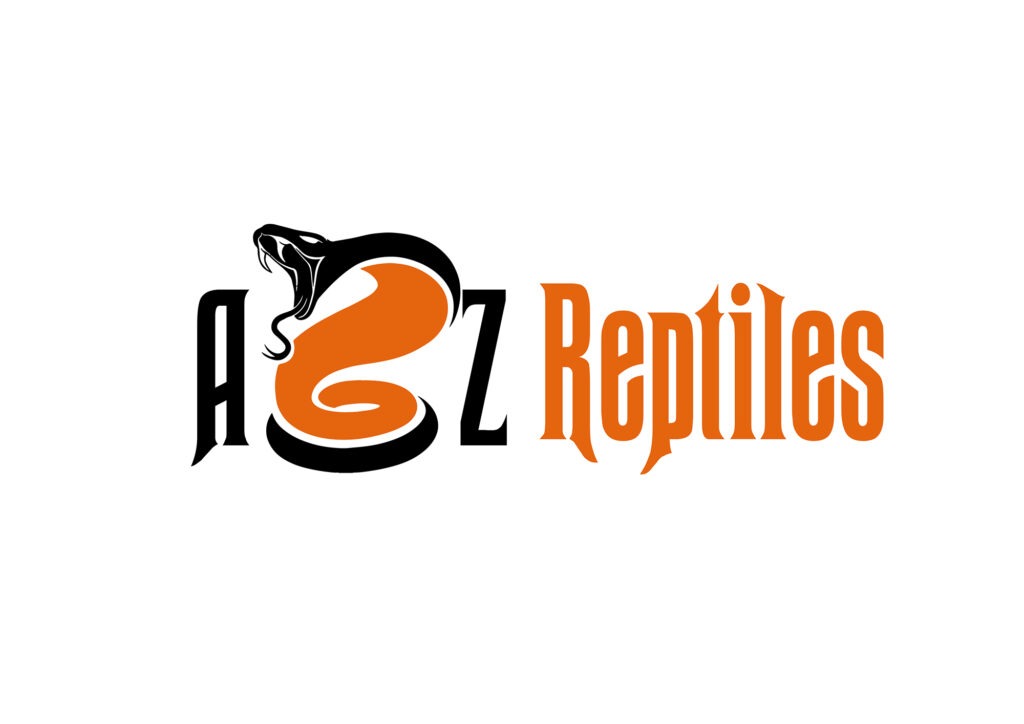

This is the link to click for a reptile or a frog! Check out this article! Click Here!
Get A Baby Tortoise! Check out This article! Click Here!
Ball Python Care Guide CLICK HERE!
Ball Python Habitat Guide!
Bearded Dragon Care Sheet!
Blue-tongue Skink CARE SHEET!
CARE SHEET FOR RED-TAIL BOA!
Reticulated Python Care Sheet!
Savannah Monitor Care Sheet!
Glass Cages!
Animal Plastics!
Custom Cages!
ARS Caging!
Custom Reptile Habitats!